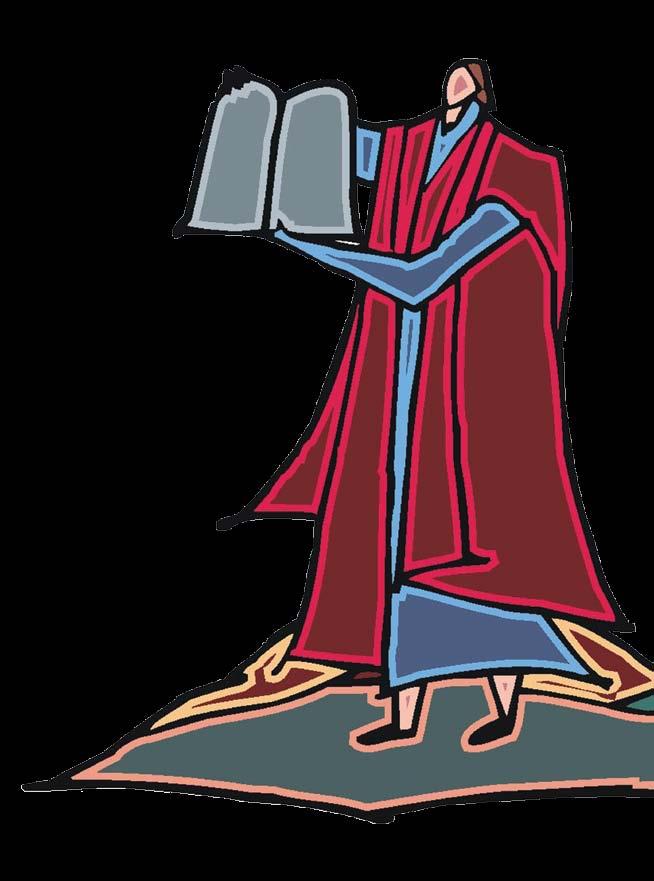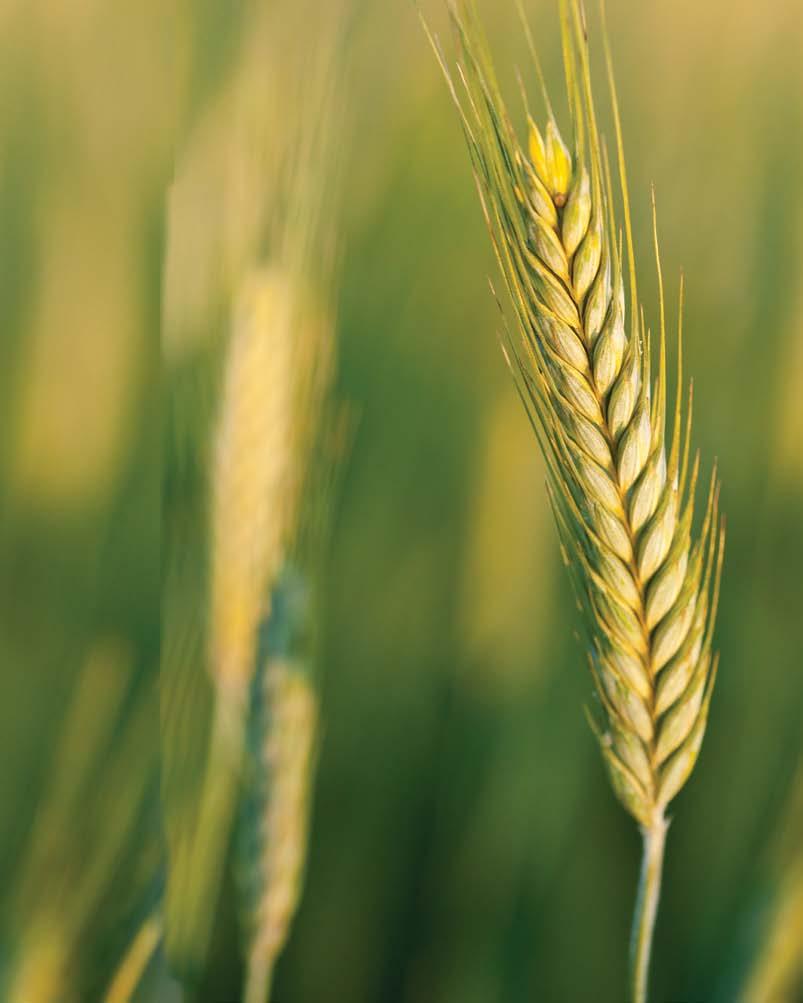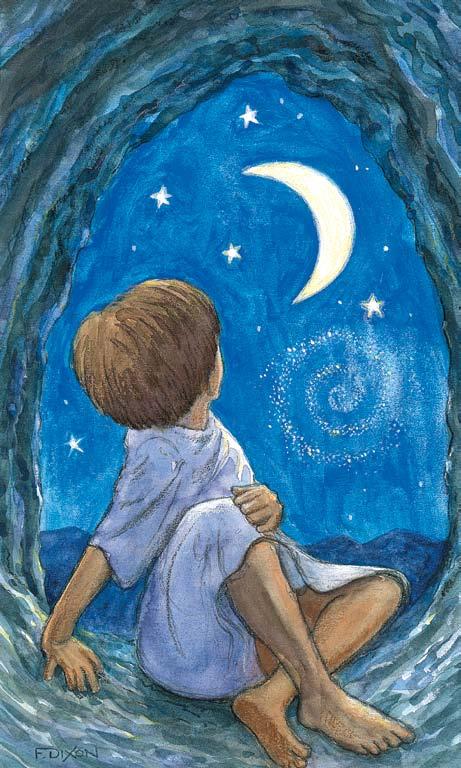
8 minute read
Shavuot
Opportunities
Count the days from Pesah to Shavuot.
Advertisement
Make a storyboard of the Bikkurim prayer.
Make your classroom green.
Tell a personal story of Mt. Sinai.
Participate in a midnight Torah study.
Act out the Book of Ruth.
Family Opportunities
Make a milkhig meal for Shavuot.
Go to a confirmation or Shavuot service.
Green your house for Shavuot.
Weeks
Work in groups of 3-4. Your teacher will give you a few pages from this year’s Jewish calendar. 1. Count the number of days from the second day of Passover to Shavuot.
2. How many weeks are involved? ______
____________________________________________ 3. Why would the Jewish name of this holiday be called Shavuot, weeks?
Check off the "Count the days from Pesah to Shavuot" box.

Shavuot

Shavuot is the day we remember Moses getting the Torah on the top of Mt. Sinai. Shavuot is the feast of weeks. It is one of the three pilgrimage festivals. A pilgrimage festival was when Jews in ancient Israel went up to Jerusalem to celebrate. Sukkot and Pesah were pilgrimage festivals that each lasted a week. Shavuot is the only pilgrimage festival that is only a day (or two). There is a tradition to count the omer. This is a prayer for each of the forty-nine days between the second day of Passover and the day before Shavuot. These seven weeks are the time of harvesting grain. It starts with the barley harvest and ends with the wheat harvest. Shavuot is also Hag ha-Bikkurim, the Festival of the First Fruits. Shavuot was the first time that new fruit could be brought to the Temple.
Bikkurim
Jewish farmers used to tie a reed around the first of each kind of species to grow. Just before Shavuot they would cut fruits and put them in silver and gold baskets. The baskets would be loaded on oxen whose horns were decorated and whose bodies were covered in flowers. These oxen were marched through the country and up to Jerusalem, up to the Temple. When the farmers came to present their fruit they said five biblical verses that tell the story of the Jewish people.
A wandering Aramean was my father.
He went down into Egypt and lived there
He started out as a family that were few in number.
He became there a nation, great, mighty and populous.
And the Egyptians treated us badly, and were cruel to us, and made us do hard slavery.
And we cried out to the ETERNAL, the God of our fathers, and the ETERNAL heard our voice, and saw our bad treatment, and our work, and our slavery.
The ETERNAL brought us out of Egypt with a mighty hand and an outstretched arm, with great terror, with signs and wonders.
And God brought us into this place, and gave us this land, a land flowing with milk and honey. (Deuteronomy 26:5-10)

Work in groups of five to make a storyboard of this biblical prayer. A storyboard is a set of pictures that tell the order of shots in a movie.
Check off your “make a storyboard of the Bikkurim prayer” box.

Make Your Classroom Green
We remember that when the Familiesof-Israel came to Mount Sinai it burst into life with flowers and greenery. It was no longer desert. From this memory it has been a Jewish custom practiced by many communities to decorate synagogues and homes with flowers and other greens. The places that are really serious about decorating for Shavuot are kibbutzim in Israel. They really understand a harvest holiday. Decorate your classroom for Shavuot. Make it a team effort. Assign different groups to make different things. Use your storyboards as part of the decorations.
Check off the “Make your classroom green” box.


Here is a photograph of our green classroom.
When I Was at Mount Sinai
The Midrash teaches (Exodus Rabbah 28.5) that every Jew who ever lived and who ever will live was at Mt. Sinai. When you were standing, waiting for the Torah, whom did you see? To whom did you talk?

Name a famous Jew whom you saw at Sinai: ___________________________________________
Think of a question you would like to ask your famous Jew. ___________________________
Imagine how the Jew you chose to meet at Sinai would answer that question:
Imagine going from Egypt to Mount Sinai. Imagine hearing God teach Torah. You are going to share your memories of what that was like. Your teacher is going to ask you a series of questions to help you remember.
Check off your “personal story of Mt. Sinai” box.

Midnight Torah Study
We remember that on the morning that B'nai Yisrael were to receive the Torah, the people overslept. God was waiting on top of Mount Sinai, and Moses had to wake up B'nai Yisrael. To make sure that they would never miss another giving of the Torah, Jews began the tradition of studying all night on Erev Shavuot. You are not going to study all night, but ask your parents to wake you up at midnight on Erev Shavuot to study this Torah together.
ABRAM MEETS GOD
When Abraham was a boy he was called “Abram.” This is a story about Abram. This is not a Torah story. It is a midrash. It is a story that grows out of a Torah story. Long ago Nimrod was a wicked king. Nimrod wanted everyone to bow to him. Nimrod wanted everyone to treat him like a god. Nimrod wanted everyone to believe that he was a god.

One night a huge star came into the sky and ate four other stars. It ate the North Star. It ate the South Star. It ate the East Star. It ate the West Star.
Nimrod asked his wizards, “What does this mean?”
The wizards all said, “A boy has been born who will let people know that you are only a person.” Nimrod said two things. Nimrod first said, “I am a god.” Then Nimrod said, “Kill the boy.”
For three years they searched for the child. Terah and Amtela were scared. They hid their son Abram in a cave. They wanted him to be safe.
Abram stayed in the cave day and night and looked out at the world. He was lonely. He was scared. He wondered, “Who created the world?” He wondered, “Why am I here?” Abram saw the sun. The sun was hot. The sun gave light. The sun gave life. Abram thought, “The sun must be god.” Then a wind blew a cloud in front of the sun. It got darker. Abram said, “The wind can stop the sun. The wind must be god.” Night came. When the sun went down, the wind stopped. Then the moon rose. Abram said, “The moon must be god.” He thought about her all night long.

In the morning, the sun rose again. Abram knew that the sun could not be god. Then Abram suddenly knew the truth. He said, “There must be one God who created everything. One God made the sun. The same God made the wind. The same God made the moon. The same God made Nimrod. And the same God made me. I believe in one God.”

Then Abram heard a voice that said, “I am here, My son. I believe in you.” Abram said, “I am not alone anymore. I am not afraid anymore.” Then Abram began to pray.
1. How can God whom we cannot see be more powerful than the sun, the moon and stars that we can see?

2. What do you think Abram said in his prayer? ______________________

Here is a photograph of our midnight study session.

Check off the “midnight Torah study” box. 127
The Book of Ruth
1. Long ago there was a famine in Israel.
Elimelekh, his wife Naomi and their sons Mahlon and Hilion moved to Moab.
Both sons find wives in Moab. Then
Naomi's husband and her two sons die. 2. Naomi decided to return to Israel. She told her daughters-in-law to return to their own mothers and remarry. Orpah left, but Ruth said, “Don’t ask me to leave you, or to stop following you; For where you go, I will go;
And where you live, I will live;
Your people will be my people, and your God, my God.” (Ruth 1:16)

3. Naomi and Ruth returned to Bethlehem. It was harvest time. To support her mother-in-law and herself, Ruth went to the fields to glean. Gleaning is picking up the stocks of grain that are dropped or left behind. Ruth went to a field belonging to a man named Boaz. Boaz was good to her. Ruth told Naomi of Boaz’s kindness. 4. It turned out that Boaz was a close relative of Naomi’s husband’s family. Naomi sent Ruth to the threshing floor at night. Boaz awoke, and Ruth reminded him that he had a family obligation to save Ruth and Naomi. Boaz said he was willing to marry Ruth but informed Ruth that there was another male relative who had the right of first refusal. 5. The next morning Boaz talked over the problem with the other male relative before the town elders. The other male relative gave Boaz permission. Boaz and
Ruth married.
Break into five groups. Have each group take one of the scenes to act out. Do it with puppets. Perform the story. The book of Ruth reminds me of

the story of ________________________
Check off “act out the book of Ruth” box.





